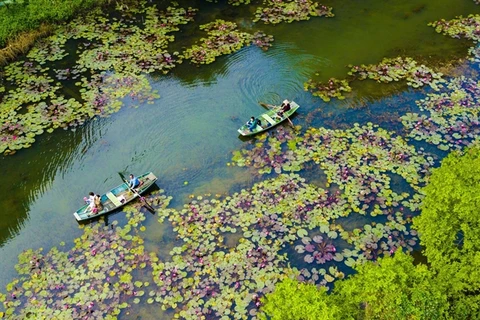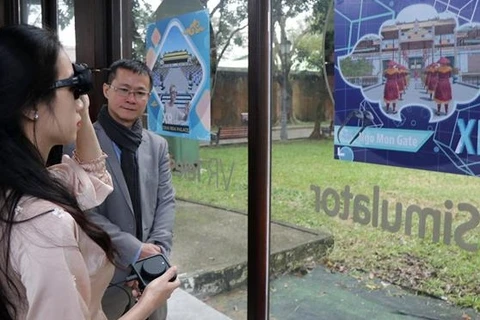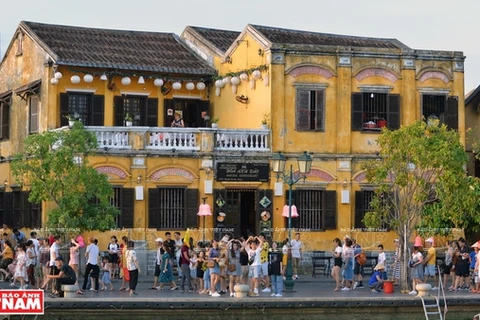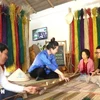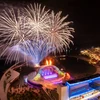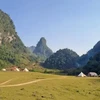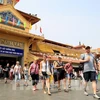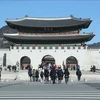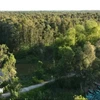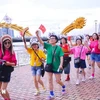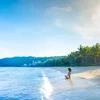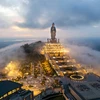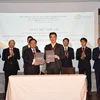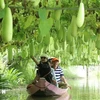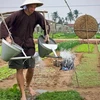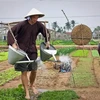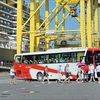 Ba Ngan Floating Market in Nga Bay town in Hau Giang province is crowded with boats selling fruits ahead of the Lunar New Year. (Photo: VNA)
Ba Ngan Floating Market in Nga Bay town in Hau Giang province is crowded with boats selling fruits ahead of the Lunar New Year. (Photo: VNA) The Mekong Delta, which was identified as one of the seven tourist regions of the country, has rich tourism resources, with over 28,000 km of canals, a diverse ecosystem, and unique cultural values. As a result, it boasts great potential to become an important resort destination in the southern region.
However, tourism development in the Mekong Delta remains very modest compared to other tourist areas in the country.
Despite efforts to lure visitors to the region, tourism products in the Mekong Delta are not diverse and attractive.
Many provinces in the region have similar tourism products, confusing tourists when they choose a destination for their travel.
Tran Anh Thu, Vice Chairman of the People's Committee of An Giang province, said tourists usually chose the first destination in HCM City, the international gateway to the region, and then the second destination as sea tourism in the central region or Phu Quoc Island in Kien Giang province or river tourism in the Mekong Delta.
Thu said tourism products in the Mekong Delta were less attractive to tourists, especially international visitors.
Fruit gardens in Tien Giang somehow bring the same experience to tourists when they travel to Vinh Long and Ben Tre, according to the official. Likewise, cultural tourism in Tra Vinh, Bac Lieu, and Soc Trang is similar to that in An Giang, and eco-tourism in Dong Thap, An Giang, Bac Lieu, Long An, and Ben Tre is not different.
He added that each locality needed to develop its unique tourism products and establish promotion links to develop regional tour packages to lure tourists.
Poor infrastructure
Duong Duc Minh, Deputy Director of the HCM City's Tourism and Economic Development Research Institute, said community-based tourism would be an excellent material for tourism development strategy in the Mekong Delta.
However, community-based tourism had not been integrated into tourism planning and development, requiring localities to have policies to develop the model in the future.
Pointing out weaknesses in tourism development, Deputy CEO of Saigontourist Group Truong Duc Hung said in many community-based tourism sites, the transport infrastructure was still inadequate, and services remained poor.
A shortage of qualified human resources had hindered the development of some services. In addition, there was little information about tourist attractions in the Mekong Delta, making it difficult for international visitors to access them.
Hung said localities in the region must strengthen marketing strategies and have firm stimulus promotion policies to attract tourists.
Regional coordination
For the Mekong Delta to become an attractive destination, many experts believe that localities need to strengthen regional coordination and links among one another, especially with HCM City, to diversify tourism products and connect service supply chains between HCM City to 13 localities in the Mekong Delta.
Vice Chairman of the An Giang Provincial People's Committee Tran Anh Thu said ecological and spiritual tourism was a growing trend in the world, especially after the COVID-19 pandemic.
The province's most popular spiritual tourism destination, Ba Chua Xu Temple in Chau Doc city's Nui Sam Mountain, welcomed about five million tourists last year, creating jobs for more than 400,000 people.
HCM City is the first destination for domestic and international tourists. Therefore, tourism development between HCM City and 13 Mekong Delta localities will create attractive tourism values.
Deputy Director of HCM City's Department of Tourism Bui Thi Ngoc Hieu agreed, saying that some tour packages from HCM City to the Mekong Delta had received a large number of tourists after a short time of coordination.
A 1-day tour from HCM City to Tien Giang, Ben Tre, or Long An, and a 2-day tour from HCM City to Tien Giang – Ben Tre; Ben Tre – Tra Vinh; and Long An – Dong Thap are among popular travel packages. In addition, the river tour from the Sai Gon River to the Tien River, which was launched this year, has received positive feedback.
Other multipleday tours have been built to serve tourists. For example, Saigon Tourism Corporation has set up three tours lasting between four and six days from HCM City to the Mekong Delta provinces, which feature the identity and characteristics of the life, people and culture of the Mekong River.
HCM City has worked with the Mekong Delta to reduce food costs and free admission tickets to lure tourists.
By the end of 2022, the Mekong Delta was estimated to have welcomed over 44 million tourists, an increase of 201.2% over the same period in 2021. As a result, tourism revenue of Mekong Delta reached nearly VNĐ34 trillion, up 216.9% over the same period of 2021.
Currently, domestic tourists account for two-thirds of the total.
Bold plans
Experts said bold moves were necessary to develop tourism in the Mekong Delta to a new level.
Deputy General Director of Vietravel Huynh Phan Phuong Hoang said that shortly, localities in the region needed to focus on investing in synchronous tourism infrastructures, such as building expressways connecting HCM City to the Mekong Delta, solving the traffic jam at Trung Luong – My Thuan Highway at peak times and urgently implementing the construction of Dai Ngai Bridge to develop tourism products between Tra Vinh and Soc Trang.
Four or five star hotels, resorts, and garden resorts must be associated with the typical river and water nature of the Mekong Delta, developing tourism products with incredible prices to boost the number of visitors.
Authorities should have policies to encourage local people to do tourism, such as community-based and green tourism, and develop more eco-agricultural tourism products.
Thang suggested that tourism products of the Mekong Delta must serve tourists of different ages, such as discovery tourism for young people and resort tourism for the elderly.
Each province should identify a strong tourism product, then cooperate to develop attractive tourism products to compete with that in the Southeast Asian region, she added./.
VNA
